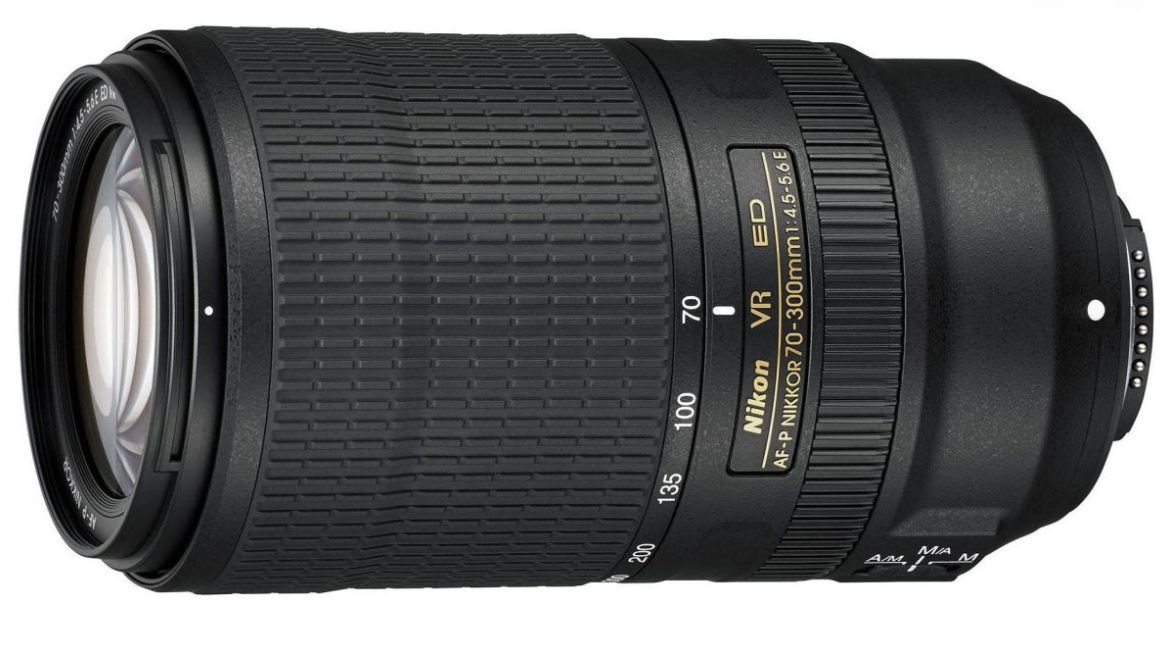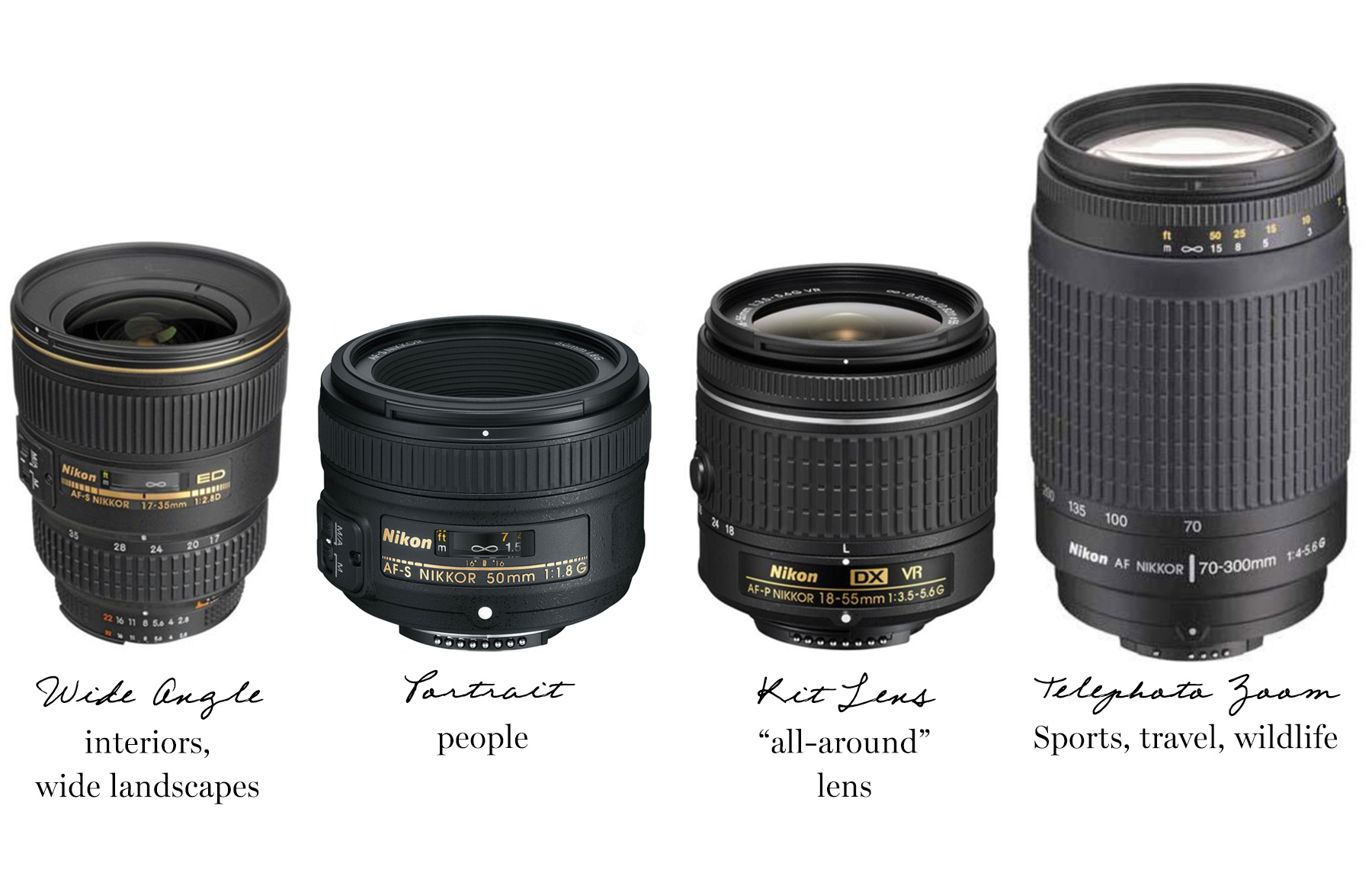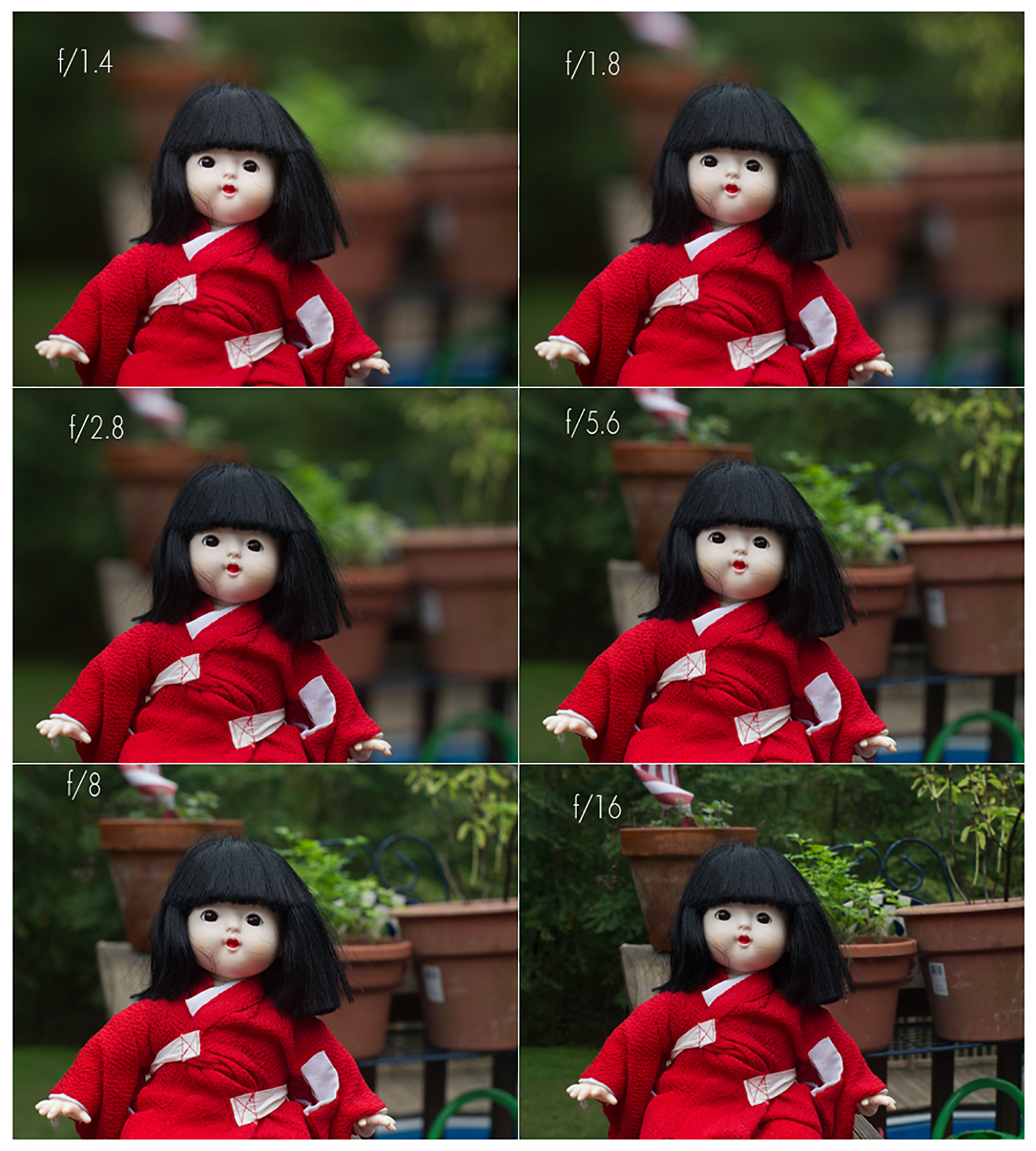Choosing A Lens | Rhode Island Photography – Lens Shopping Guide
dslr and mirrorless camera lenses
CHOOSING A LENS FOR YOUR CAMERA
An introduction to and overview of camera lenses

In a previous post, I wrote all about choosing a camera. But when you get a camera body, you will also need a lens! Have you ever stopped and looked at camera lenses? You see all sorts of funky letters and numbers like Canon 85mm f/1.4. Or Nikon 18-55 f/3.5-5.6G VR. It’s all gobbledygook until you understand a few basic things on choosing a lens for your camera. When it comes to choosing a lens to go with the body of the camera you bought (this only applies to DSLR and Mirrorless because remember that point and shoots have one fixed lens) there are many choices out there. So. Many. So I am going to try and help break it down a bit. There are more factors that go into purchasing one but I want to keep this on a pretty basic level! You can always email me if you have more specific questions. And as I said in my previous post, I am a professional photographer, I am not a professional camera retailer so I will make some errors somewhere along the way, I am sure!
TYPES OF LENSES
Fixed or Variable: The first thing to consider when choosing a lens, this is just a fancy way of saying that lenses come in two main categories – Zoom, or Prime. With Zoom lenses you can zoom in and out by turning the lens. With prime lenses you have to zoom in and out by moving your feet – the lens won’t change. Some examples of prime lenses would be lenses that say: 50mm, 35mm, 85mm, 105mm. Some examples of zoom lenses would be lenses that say: 24-70mm, 70-200mm, 18-55mm, 55-200mm. Zoom lenses are more versatile but traditionally (until you get to higher end lenses) prime lenses have a better quality glass. As for the numbers on them – the human eye sees at a distance of roughly 50mm. So any number lower than 50 will be a wider angle than what we see and the lower it goes, the wider it gets. And as numbers increase, it’s more and more zoomed in.
General Lens Categories: When you’re choosing a lens, you’ll find that lenses can be broken out into different general categories depending on what you are using them for.
- Wide Angle – covers any from 16-35mm, good for interiors or wide landscape images
- Portrait – 50 mm, 85mm, good for what it says, portraits of people or anything that you want to photograph naturally as seen with your eyes, Portraits can be taken with a prime lens or a zoom lens, but it’s usually between the 50mm and 135mm range.
- Kit lens – a good basic all-around lens this is the lens that often comes with the camera body when you purchase it. Usually it goes from a wider angle to a zoomed angle. Downside is that the quality of the glass isn’t usually as good.
- Zoom / Telephoto Zoom – Covering distances roughly 70-200 mm, this will allow you to get close and is good for sports, wildlife photos, and travel if you want to get closer images.
Specialty Lenses: Within fixed and variable lenses, there are a few types of specialty lenses. These are for very particular photography situations so think about what you will use it for when choosing a lens.
- Fisheye – 6mm-15mm range, when you want a fun really wide angle lens that has rounded edges – like looking through a peephole
- Macro – for super close up details. Think flowers, insects, eyelashes or baby details, these can focus mere inches away from the subject
- Telephoto – these are prime lenses over 200mm in length. So they won’t zoom in and out but can zoom in on subjects far away. (Think sporting sideline cameras) Usually the longer the length, the more expensive.
- Tilt-shift – these lenses give a special effect to the images such as causing parts of the image to be intentionally blurry. These can be very fun lenses to use but in general have a step learning curve.

DECIPHERING LENSES
A glossary of sorts
When you’re choosing a lens, whether in store or online, on each lens (or in each lens listing on the internet) you will see several words and numbers. The first is the name of the brand. Some you might see: Nikon / Nikkor, Canon, Sigma, Tamron, Sony
After the brands you will see the focal length / length of the lens. You will either see one number such as 35mm or a range of numbers such as 24-70, 18-55, etc. This tells you what the lens is going to be good for in terms of what we spoke about above (wide angle vs portrait vs zoom). It also tells you if the lens is a Prime or a Zoom.
For some brands such as Nikon, directly after the focal length you will see other numbers such as 1.8, or 2.8, or 3.2-5.6. Canon has this on a different part of the lens. But online when you are looking they will come directly after the focal length. These numbers are called the Aperture and, in a way, are more important than the focal length because the Aperture determines two main things. Light (exposure), and Depth of Field of the image. I’ll get into those in the next section
Other terms you might see:
FX – this means the lens is for a full-frame camera. Cameras are either crop sensor, or full-frame. Check with your camera manual to figure out which you have.
DX – this means the lens is for a crop-sensor camera body. These lenses will usually not work on a full-frame camera body.
IS / VR – Stands for Image Stabilization / Vibration Reduction. This means there are mechanisms inside the lens itself that cut down on camera shake. Literally when your hands aren’t steady and shake a little. This is a nice bonus to have
ED – This highlights a specific type of optical glass optical that nikon uses to deal with something called chromatic aberrration (basically where the camera lens does not properly mix colors.
APERTURE AND LIGHT
What is it and why does it matter?
Aperture: Super (SUPER) briefly I am going to explain three things to you about photography. You need three main parts (others as well, but these are the main parts) to work together to create a photograph – the Shutter Speed, the Aperture, and the ISO. These are defined below for you in simplistic terms.
- Shutter Speed: How quickly the shutter opens and closes in the camera. Used to either freeze motion, or create motion blur.
- ISO: How sensitive the camera’s sensor is to light. Remember the old days when we bought *gasp* film and it was either 200, 400, or 800 etc? That was ISO. In my class I use the example of worker bees. As a lower ISO (e.g. 200), you have fewer bees working to gather the light. At a higher ISO (e.g. 1600) you have more bees working to gather the light – which means you can shoot in darker conditions.
- Aperture: The opening in a lens through which light passes to get to the sensor. The size of this opening is written as a number
Shutter speed and ISO are determined by your camera body. BUT the Aperture? That’s all on the lens. So the little numbers after the focal length become important. Aperture numbers run from (roughly) f/1.4 to f/22. The lower the number, the bigger the opening can be, which means the more light that can get through, which means you need less light to shoot in (ie you can shoot in darker places as the number gets lower). In my example up there at the top of this section I said Canon 85mm f/1.4 and Nikon 18-55mm f/3.5-5.6. The “f____” is the aperture of the lens. Going off of what I just said, the lens that says 1.4 can shoot in less light than the lens that only goes down to 3.5. Now, as you can probably guess (or saw if you clicked on the links for the lenses) the lower that aperture, the higher the price. It’s simply how it works.
If you are going to constantly be photographing outdoors in daylight, the aperture will not matter as much to you in terms of light. But if you plan on photographing a lot indoors without using a flash, or if you want to
Special note for zoom lenses. If there is only one aperture number (ie 70-200 f/2.8) that means that no matter the focal length, whether it be 70 or you zoom up to 200, you can still photograph at 2.8. But if there is a range of numbers (ie 18-55 f/3.5-5.6) that means that at the lowest end of the zoom, you can have the aperture at 3.5. But as you zoom in with the lens, the minimum aperture will increase until it gets to 5.6 at 55mm. This matters because as you zoom in, if the aperture is getting smaller, remember, that means you have less light coming into the camera and it can affect your exposure.
APERTURE AND DEPTH OF FIELD
What is it and why does it matter?
Now. Not only does Aperture control the amount of light coming into the camera, it also controls something called the depth-of-field. When you take a photo, you are always focusing on something, whether it be an eye, or a flower petal or a statue. Ninety-nine percent of the time, there is always something you want in focus in the image. When you look at that photo, anything in front of and behind that point you focused on makes up the “field” How MUCH of that is also in focus is called depth-of-field.
There are technical reasons that the aperture controls this, but I am not going to get into that. Suffice it to say – the lower your Aperture (f/1.4, 1.8, 2.8) the less will be in focus. The higher your aperture (f/5.6, 8, 13), the more will be in focus. You can see an example below. I photographed this with my focus on the doll’s face. You can see as that aperture changed what else was in focus also changed.

Where this comes into play is in choosing your lens. If you only want to photograph landscapes, you’re not going to worry about things being out of focus and will not be tied to a lens with a low aperture. So you will have more flexibility. But if you will be shooting portraits, or details, or anything where you are going to want your subject to pop from the background, that is where the lens choice will help. Match your lens to what you want to photograph.
I so often have people show me a photograph they took and say “Why is everything so in focus?” And I’ll tell them, “it’s because with the lens you are using your aperture cannot go below 5.6 when you are zoomed in.” It’s simply not possible to get that really gorgeous out of focus, that beautiful bokeh as easily. Can you get some? Sure absolutely there are other things than *just* the lens that make the image. But the aperture on the lens is a big part of it.
RECOMMENDED LENSES
A few recommendations for you to start with
There are a few lenses I always recommend people start with. And some of it is dependent on what you are photographing. Others are just a good basic start.
Good Basic Starter Lens: 50mm 1.8 or 50mm 1.4
I always always recommend people pick up what we call a “nifty fifty.” This is a 50mm lens. Made by any brand, they are prime lenses that tend to come in either f/1.8 or f/1.4. Since this lens most approximates the human eye it’s good for a wide variety of things. Retails under $300
Good Lens for Sports: Budget option – 70-300mm f/3.5-5.6, Higher-end option – 70-200mm f/2.8
For sports what you are looking for is focal length. Since you’re usually stuck on a sideline or in bleachers far away from the action, this helps you get close. In this case, focal length matters a bit more than the aperture (f/). The 70-300 is avilable in most brands and usually retails for under $400 but keep in mind that with the changing aperture as you zoom in, you will need more light. The 70-200 are available in many brands and the fixed f/2.8 aperture means even as you zoom in you won’t need any more light. The 70-200 lenses retail more closely to $2000.
Good Lens for Landscapes: Budget option – Tokina 17-35mm f/4, Higher-end option – Nikon 14-24mm f/2.8, Canon 24-70mm f/2.8
For landscapes you can either go super wide angle, standard wide angle, or even zoom. Super wide angle will be those sweeping panoramas. Standard will still be wide but not quite as much so. In this case you probably want to look more at the focal length. Most landscape photographers are not using super lower apertures so you have some flexbility there. The Tokina retails around $450, whereas the higher end Canon and Nikon options retail anywhere between $1400 and $1900.
Good Lens for Portraits: Budget option – 50mm f/1.8 or 1.4 Higher-end option – 85mm f/1.4, Nikon 105mm f/1.4, Canon 135mm f/2
With portraits you want a lens between 50mm and roughly 135mm. Anything wider than 50 that will distort features, and anything longer than 135 will get really zoomed in unless you position yourself pretty far away. In this case, aperture is what matters. You want a lens with a lower aperture so that you can have those non-subject areas fall beautifully out of focus. As mentioned above, the 50mm retails for under $300. The 85mm, 105mm, and 135mm options retail between $1000 and $2000.
A WORD ABOUT LENS BRANDS
For each camera, there are specific lenses that will fit. It’s not a universal thing – it’s kind of like language. You need a lens that speaks the same language as your camera body does or else they won’t fit or work. When you are choosing a lens, you will notice there are SO. MANY. brands out there. First, there will be native lenses – those made by the camera company that made the body – ie a Nikon lens for a Nikon camera. And then there are off-brand lenses. These are lenses made by companies that will fit different brand camera bodies. Sigma Zeiss, and Tamron are such companies – they will make one lens (ie a 30mm f/1.4 lens) but make a Nikon version, a Canon version, and a Sony version.
Some people will argue that native glass is the “best” quality glass. I have found over the years that this isn’t necessarily so! Glass and lenses have been so refined and tweaked over the years that often off-brand sellers are just as good if not better at times than the native glass. Often these brands will have different levels of the lens as well. I myself shoot with two Sigma Art lenses that are absolutely pristine and sharper than my Nikon. Zeiss is another company that comes to mind. They make gorgeous, amazing tack sharp glass. You will pay a pretty penny for it, but they are just an example of “big name is not always best name.”
So don’t be afraid to look around. Personally, I shop Nikon, Sony, Sigma, and Tamron lenses. There are more beyond these available and you can sometimes save some money by buying off-brand, but always always do your homework. Read reviews. Don’t go into it blindly.
OTHER THINGS TO CONSIDER
Extra things to keep an eye out for when you are choosing a lens
- You need a lens that works for your body. If you are a crop sensor camera, you need a crop sensor lens. If you are full frame, you need a full frame lens. Your local camera store or some googling can help you figure out what you need.
- Watch out for lenses marked MF – there are still some lenses out there that are Manual Focus only. This means you will have to turn the lens and focus it yourself for every single shot. This type of lens has its place (fantastic with things like macro shots, baby details etc), but be careful about picking one up accidentally.
- Mirrorless and DSLR lenses are different and cannot be interchanged. Make sure you’re shopping in the right category depending on what kind of camera body you have.
- Nikon has a lovely (/sarcasm) system whereby certain lenses will only work with certain bodies because sometimes the lens needs to have the focus motor in it. Before buying anything make absolutely sure you have what you need.
- Micro and Macro terms are used interchangeably. These are lenses that are used specifically close up and not really good for general use.
- Refurbished is a term you’ll see a lot. This means that the lens was previously owned and has been restored to like new condition by the manufacturer. Don’t be afraid to get refurbished!
- Lens hoods are often included. A lens hood attaches to the end of your lens and cuts down on light and glare. Very useful on sunny days!
- When shopping online you can often narrow your lens search by the “lens mount type” – basically what the lens is going to attach to. Know that, and it gets a lot easier.
